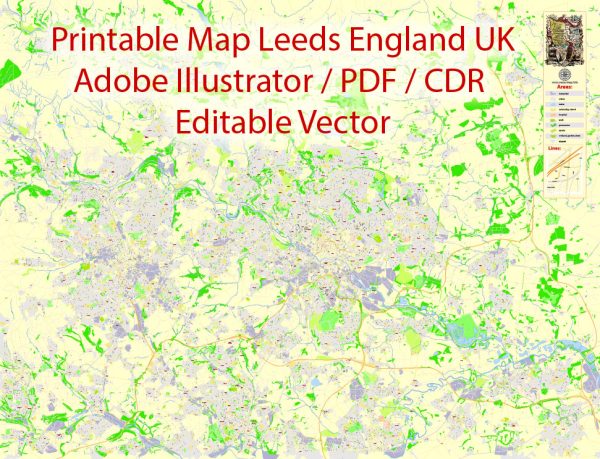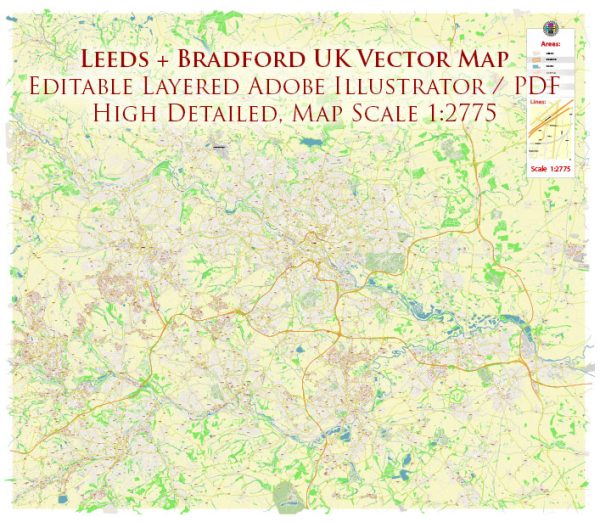The history of urban development in the Leeds Bradford area in the United Kingdom is marked by significant economic, industrial, and social changes. Both cities have a rich history that has shaped their urban landscapes.
- Early History: Leeds and Bradford have ancient origins, with evidence of settlement dating back to Roman times. However, their real growth began in the medieval period when they became market towns. Leeds was known for its woolen industry, while Bradford developed as a center for textiles and weaving.
- Industrial Revolution: The 18th and 19th centuries brought about the Industrial Revolution, and both Leeds and Bradford played crucial roles. The textile industry, especially wool and worsted manufacturing, flourished in the region. Mills and factories emerged along the riverbanks, and the population grew as people moved to the cities for work.
- Canals and Railways: The construction of canals and later, railways, further fueled industrial growth. The Leeds and Liverpool Canal, completed in 1816, connected Leeds to the port of Liverpool, facilitating the transportation of goods. The arrival of the railway in the mid-19th century enhanced connectivity and trade.
- Architectural Heritage: The urban development during the Victorian era left a lasting impact on the architecture of Leeds and Bradford. Elegant Victorian buildings, warehouses, and mills still stand as a testament to the prosperity of the industrial age. In Leeds, landmarks like the Corn Exchange and the Leeds Town Hall showcase the architectural grandeur of the period.
- Post-World War II Reconstruction: Like many other British cities, Leeds and Bradford faced challenges during and after World War II. The post-war period saw extensive reconstruction efforts, with a focus on rebuilding damaged infrastructure and addressing housing shortages. This era also witnessed the rise of modernist architecture, with new housing estates and commercial developments.
- Economic Diversification: In the latter half of the 20th century, both cities experienced economic diversification. Traditional industries declined, and there was a shift towards services and finance. Leeds, in particular, emerged as a financial hub, hosting major banking and legal institutions.
- Contemporary Developments: In recent decades, there has been ongoing regeneration and redevelopment in various parts of Leeds and Bradford. The waterfront areas along the River Aire in Leeds have undergone significant transformation, with new commercial and residential developments. Bradford has also seen regeneration projects, including the City Park and the Broadway shopping center.
- Transportation: The transportation infrastructure has continued to evolve, with the expansion of motorways and improvements to public transportation systems. The Leeds-Bradford International Airport serves as a vital connection point for the region.
- Cultural and Educational Institutions: Both cities boast cultural and educational institutions that contribute to their vibrant urban life. Leeds is home to the University of Leeds, while Bradford houses the University of Bradford. These institutions have played a role in shaping the cultural and intellectual landscape of the region.
The history of urban development in Leeds and Bradford reflects the broader trends of industrialization, economic shifts, and cultural changes that have shaped the United Kingdom over the centuries. The cities continue to evolve, balancing their rich heritage with the demands of a modern and dynamic society.



 Author: Kirill Shrayber, Ph.D.
Author: Kirill Shrayber, Ph.D.